| Candi Jabung is situated close to the main
coastal road, about five kilometres east of Kraksaan, in the district of Probolinggo.
Constructed almost entirely of red brick, the main building displays a form which is both
unique and 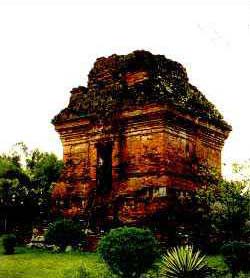
impressive. From a quadrangular base, a cylindrical body
rises to a height of just under 16 metres. The roof, now incomplete, was apparently dome
shaped. Excavations have revealed that the principal monument was originally set in a
square, walled enclosure, the four corners of which were marked by smaller
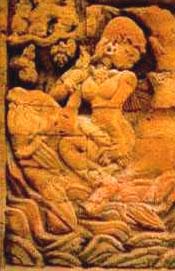
Candi Jabung; a scene
from the story of Sri Tanjung , carved in relief on the outer wall of the main building
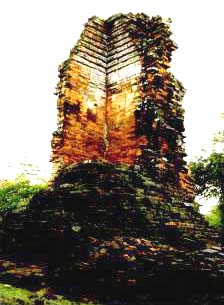
buildings known as menara sudut, each one measuring
about six metres in height. Although the surrounding wall is no longer visible, the menara
sudut occupying the south western corner of the complex can still be seen.
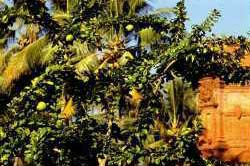
Trees
bearing maja fruit, from which the name Majapahit is said to stem, grow in abundance at
Candi Jabung.
The Pararaton refers to the original name of this site as Bajrajinaparamitapura,
a Buddhist shrine dedicated to a member of the Majapahit royal family. Dating from
A.D. 1354, Candi Jabung appears further to have been referred to in the Nagarakertagama
as one of the places visited by King Hayam Wuruk during his tour of the eastern
provinces in 1359.
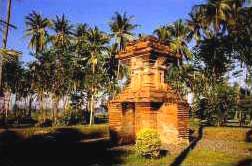
|
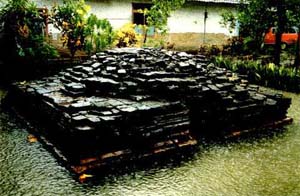
Temples
at Porong Sidoarjo; (clockwise from aboce left ) Candi Pari, showing stylistic influence
from ancient Champa, dates from A.D. 1371; The remains of Candi Sumur , located a few
hundred metres from Candi Pari; Candi Pamotan. |